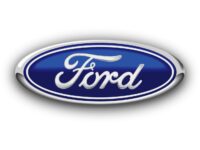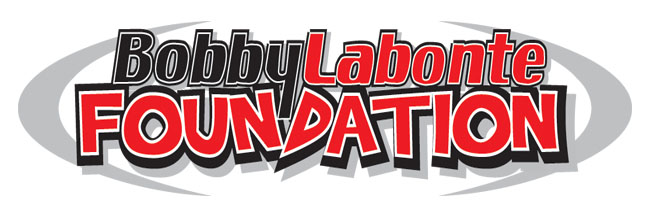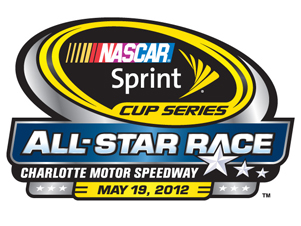- [media-credit name=”http://corporate.ford.com” align=”alignright” width=”200″]
 [/media-credit]Ford Racing’s 2013 NASCAR Fusion was subjected to the same development process as any other production vehicle within the Ford Motor Company Design Center.
[/media-credit]Ford Racing’s 2013 NASCAR Fusion was subjected to the same development process as any other production vehicle within the Ford Motor Company Design Center. - Ford was the first manufacturer to unveil its 2013 model when it showed the car on track atCharlotte Motor Speedway on Jan. 24, 2012.
- The normal schedule for getting a production vehicle from paper to showroom is roughly four years, but by the time the green flag falls for the 2013 Daytona 500 the development of the 2013 NASCAR Fusion will have taken half that amount of time.
DEARBORN, MI, (May 15, 2012) – The 2013 NASCAR Ford Fusion is still nine months away from its official debut in the Daytona 500, but the race to get it from concept to competition is progressing right on schedule.
With brand identity being the cornerstone of NASCAR’s newest stock car, Ford decided to incorporate its Design Center into the development process for the first time in decades. That proved to be a beneficial component as the communication between the Design Center staff and Ford Racing played a key role in enabling Ford to be the first manufacturer to unveil its 2013 model when it took to the track at Charlotte Motor Speedway in January.
“When we first starting thinking about what model we wanted to use in the NASCAR Sprint Cup Series for 2013, we thought Mustang would be a great fit because of the positive response we got from enthusiasts and fans in the Nationwide Series,” recalled Jamie Allison, director, Ford Racing. “But when we saw what the Design team had done with the all-new 2013 Fusion production car, we all looked at each other and agreed we had to stay with Fusion because it’s sporty, it’s dynamic, and it looks like a race car.”
Faced with a two-year deadline of getting the race car completed, the Design Center staff quickly got to work.
“We have a mentality here at Ford – the One Ford mentality – and that kind of goes across all disciplines and the different aspects of any project, be it a race car or a street car,” said Design Manager for Specialty Vehicles Garen Nicoghosian, who headed up the project. “You might be going formiles per gallon or miles per hour, but the same mentality applies nonetheless. We definitely relied heavily on that by doing a lot of teamwork and making sure the vehicle hit all the points it needed to hit. Once you apply this approach and the problem-solving techniques to the project, you go further to deliver results with a unified goal in mind. We overcame all of our issues based on that principle and mentality.”
“We treated this one as just another production vehicle. Even though it was part of the racing program, we really treated it just the same as any other project,” said Gary Hubbard, DTO Design Engineering Manager. “I think everybody that does this is in the business because they love to make cars, so they just jumped in and were really enthusiastic. It became a kind of ‘whatever-we-need-to-do’ attitude just to bring it all together and make it happen.”
The inclusion of the Design Center also meant the way Ford Racing used to construct new body styles, such as the Taurus in 1998 and initial Fusion in 2006, had to be different.
“Having Garen work with us has been a major help because in past projects I was given a picture and then had to design the race car around the NASCAR dimensions,” said Ford Racing Aerodynamicist Bernie Marcus. “The new Fusion has been something totally new and even though the process took a little bit longer, I think the end result is going to be better because it has enabled us to put more character lines into the car.”
The process included digital sculpting, milling of clay models, and wind tunnel testing, which involved a number of people who embraced the tight deadline.
“Everybody is excited to work on a car like this. It’s fantastic,” said Joseph Navarre, who has been with Ford for 25 years and currently serves as a design modeling manager. “It takes basically four years for us to get a car into production for Ford. We have done it a little faster, but that’s basically what we plan on.
“This car, however, has been done in a little bit over 14 months, so it’s a whole different way of looking at things. We’ve been working hard on it to get it done in that time, but it’s been just a great job to work on because there are so many NASCAR fans and so many Ford Racing fans. Being able to pull all of this together and have Design be more up front and more involved in it is so important for our company.”
The short time frame for getting the 2013 NASCAR Fusion completed reminded Kevin Goff of another project he’s worked on during his tenure with the company.
“I would equate it more to one of the show cars that we do for the big auto shows, where you’re quickly creating a stunning design,” said Goff, who has been with Ford since 1999 and is a master digital sculptor. “We would spend a lot of time waiting for the aero numbers to be run and then they would come back with dates for the next wind tunnel session that were very ambitious, so it was challenging.”
James Dunham, a master modeler and sculptor, got right into the spirit of the NASCAR project and understood the importance of getting it done right.
“The process was quicker, yet it was more fun because you were fully involved and you were excited,” he said. “I went to my first NASCAR race last year and kind of knew what it was about, but if you’ve ever watched a car on a track and seen how fast the guys move on a pit stop, that’s how we felt.”
While there were a number of challenges to overcome, including some of the common areas all of the carsshare, maintaining a certain amount of design control was crucial to make sure this version of the race car looks like the production model.
“The street car being a front-wheel drive, front engine car and the race car being a front engine, rear-wheel drive car resulted in totally different proportions with a different length and width,” said Nicoghosian. “We took inspiration from how close the old cars were to the production variance and tried to achieve the feel of that and make sure that when the cars are parked next to each other they speak the same language. They’re not identical because they can’t be, but there’s no doubt that you’re looking at a more amped up, more serious version of the new Fusion street car when you look at our race car.”
And even though there is still some fine-tuning and on-track testing to be done between now and the beginning of next season, there’s no doubt that a formula for how new race cars are constructed has been established.
“I anticipate this is going to be a relationship and a method that we will continue for years to come, and I think it’s been phenomenal,” said Hubbard. “I see this as being the standard we’ll carry through for all forms of Ford motorsport. I think we’ve all learned a huge amount, and everyone has pushed the whole project forward as a team. If we hadn’t come together like that, I don’t think we would be at the stage we are now.”
About Ford Motor Company
Ford Motor Company, a global automotive industry leader based in Dearborn, Mich., manufactures or distributes automobiles across six continents. With about 166,000 employees and about 70 plants worldwide, the company’s automotive brands include Ford and Lincoln. The company provides financial services through Ford Motor Credit Company. For more information regarding Ford and its products worldwide, please visithttp://corporate.ford.com.









